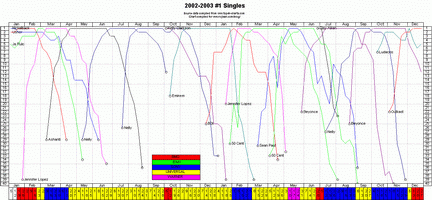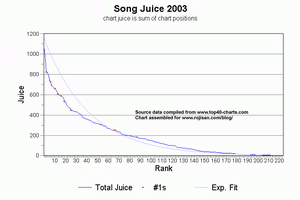music promotion model – 97 radio
out in the crazy business of music, there is simply no end to the number of people and companies that are willing to come along for the ride (or get a cut up front). for the performer out in that space for the first time, the offers are incredible, the incentives tempting, and the benefits questionable at best.
with that cautionary word, and based on a tip from a friend, i introduce for my review and your enjoyment: 97 radio. everything here is my opinion and speculation, based solely on the 97 radio website. i encourage you to dig deeper on your own time.
97 radio is there to help you. they say so right up front.
No matter what direction and goals you want to achieve with your music, whether it be pursuing Distribution, a Record Label Deal, Clubs, Venues, Booking Agents, Print Media, or all of the above, Radio Airplay is a necessity.
forget for a moment the clearchannel program-director-and-concert-business reality of radio in the united states today. forget that we’re into new music models and new ways of doing business. forget that everything that you might know about this business of music is up for grabs. forget all that for now. loyal readers might remember this:
my best advice for anyone in this business of music: if someone tells you they have the formula, that they know all there is to know to make your music career fly, they’re full of crap. and if they sell you a formula (at a seminar, a class, in a bar, at a coffee shop, or in the plush corner office of a shiny record label office tower) without knowing anything about you, your music, your audience, your goals, your skills, where you’ve come from, and what all this crazy stuff means to you, then just run. run, run away. chances are you can’t afford that formula.
ok, that’s the general warning. now we get into the specifics with this “you need radio airplay and we’re gonna get it for you” business model.
97 radio offers four “levels” of “campaign” – from just $597 all the way to $25,097.
at the entry level ($597) you get 20 “submissions” to local radio, national radio and record labels, or 60 total. that’s $9.95 per submission. at the top level ($25,097), you get 300 submissions to each of those, plus another 100 to booking agents, management companies and attorneys. a grand total of 1200 submissions, or $20.91 per submission. obviously, if you go for the expensive package, the submission process is more expensive. could be any number of reasons for that, but this scale isn’t quite right.
ok, anyway, you’ve signed up and paid up, and now you’re looking for some results. maybe they found someone who loves your stuff and is ready to throw some weight around behind you. then there’s another catch…
We will have these labels coming to us wanting you!
you pay up front (that’s the retainer they emphasize so much), and they get to control your access to the results – apparently all the calls route through their offices. but you really don’t have anything to worry about, because 97 radio offers you a bold ALL CAPS guarantee!
IF AT THE END OF THIS TERM YOU DO NOT RECEIVE AN OFFER FROM A RECORD LABEL WE WILL REFUND YOUR CAMPAIGN FEE IN FULL.
i’ll offer you a contract with my record label right now. here are the terms: i own you, your name, your band name and all the music you write or perform for the next 10 years, plus all the music you’ve written or performed at any time in the past, in any format. i control your distribution, make all artistic and management decisions for you. you work with the studios and technicians and session musicians i tell you to work with. i get to keep the first $250,000 you make, plus all my expenses on your behalf and you get 7.5% of everything you make after that. i keep the accounting records, and i’ll tell you when you should expect a check. oh, and critically important, if you breach this contract in any way or attempt to terminate it during the 10 years, you owe me $250,000 plus my expenses. there. you got an offer from a record label.
the important lesson is that a guarantee to get you an offer is no guarantee at all.
so far, none of this is really unique to 97 radio – there are companies out there doing this all the time, in one form or another.
but i do have to pick a particular nit with 97 radio – if you’re considering working with these people – if you’re seriously considering letting them represent you to “labels, radio stations, retail shops, clubs, and venues” – then carefully consider how their use of language might impact your first impression with these industry bigshots. if they can’t get their own website right, what are they going to do with your introduction to sony?
97 radio guarantee’s that we will get your music to top record company executives, from major and independent labels, that will sign your project.
97 radio has developed there system over years of working with radio stations and record retailers.
just two examples – apparently one thing they don’t guarantee is proper use of an apostrophe or using the correct homophone… it’s just entirely painful to read through all the missing words, improper use and other general language abuse, so i’ll let you find the rest on your own.
i should also say that i don’t know how 97 radio actually does their business – this is all based on their website. they could be completely legitimate and just can’t express themselves on the web. i don’t know, but the information available on the web should send up so many red flags and bring to mind so many questions that if it were me, i’d run. fast. but you’re not me, and they do invite you to ask questions, so do it. i hope you get the right answers before you sign that $25,097 check.
i really don’t mean to pick on 97 radio in particular, there are hundreds of these things out there, it’s just that they approached someone i know, and he deserves a few minutes of my critical analysis. the rest of you just came along for the ride…. i hope it was useful.
update (2004.07.09): for more on the people involved in this, check out this later post and, most particularly, the comments attached to it.




